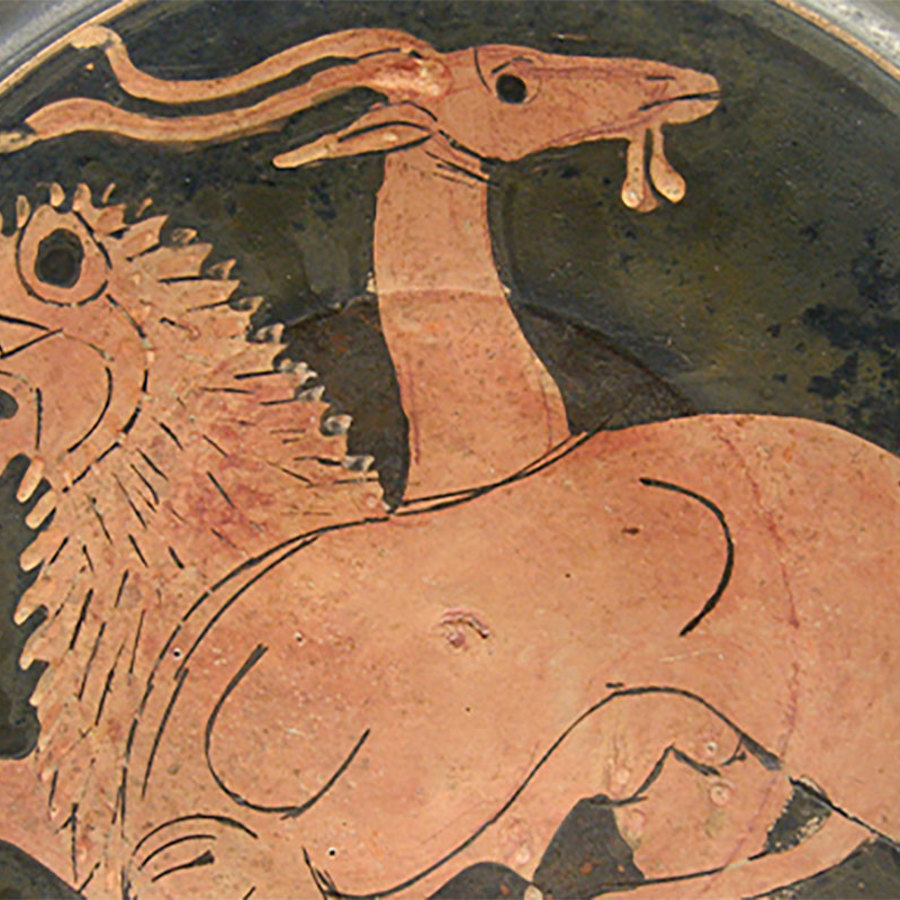
Will a chimeric parent have children who are also chimeras?
June 27, 2016

- Related Topics:
- Developmental biology,
- Reproduction,
- Chimera
A high school student from Denmark asks:
“So what happens when a chimera has children? If let’s say the ovaries or testes are made up of cells from both fraternal twins, is it possible that the sperm or eggs to be made up from both twins thus making the children chimera by default?”
No, the children of chimeras are not automatically chimeras themselves. In fact, they aren’t any more likely than anyone else to have kids with chimerism.
A chimera is made up of DNA from two different people. They have two different sets of cells, each set with their own DNA.
But each sperm or egg will have DNA from only one of the “two people” that makes up a chimera. The DNA from both does not mix in a single sperm or egg cell. And only one sperm fuses with one egg.
So, the child will get DNA from one “person” or the other, and not both. They will not be chimeras. Or at least, they are no more likely to be chimeras than any other random person.
Fused Fraternal Twins: A Chimera
In Greek mythology a chimera is a fire-breathing hybrid monster: a lion with a goat’s head protruding from its back and a snake for a tail. While real-life chimeras aren’t quite as cool as this, they are still a mix of two different people.
There are a few different ways people can become chimeras. Anyone who has had an organ transplant is technically a chimera! They have an organ from the donor -- which has the donor’s cells and DNA! -- alongside all their original organs, which have their own cells and DNA.
But that’s not the type of chimera you asked about. You asked specifically about chimeras who start out as fraternal twins.
To have fraternal twins, two separate eggs need to be fertilized by two separate sperm around the same time. If these two fertilized eggs were to develop separately, the end result would be fraternal twins.
Here I’ve colored each of the fraternal twins a different color (blue & red). So during the same cycle, two of mom’s eggs are fertilized by two different sperm.


Things go a little differently with chimeras. Instead of growing up as two separate people, you end up with one person with both sets of cells. Here is what that looks like:


The two clumps of cells that would have gone on to being separate twins fuse into a single clump. This clump then goes on to become a single person.
So what is essentially happening is two siblings are fusing together to become one person. Or to put in another way, you have a person who has some cells from one sibling and the rest from the second.
Whereas mixing blue and red paint makes purple paint, this is not the case with a chimera’s cells. There are some blue cells and some red ones. And fusing the two does not make a clump of purple—each cell has DNA from its original fertilized egg (blue or red).
The fusion happens early enough that there isn’t a problem with being conjoined or having extra limbs, though. A chimera is simply a single person made up of cells from two siblings.
Sometimes you can tell people (and animals) are chimeras based on their mixed features: they have two distinctly colored eyes, hair, or skin. But sometimes there are no clues at all until they have a genetic test done.
Click here for a story about how one man’s failed paternity test proved someone was a chimera, and here for a story about how genetic test results of two mothers raised skepticism over their genetic relation to the children they gave birth to from their very own wombs!
Chimeras Aren’t More Likely to Have Kids with Chimerism
Even when the ovaries or testes of a chimera are made up of cells from both “twins,” their sperm or egg cells will only get DNA from one “twin” or the other. This is due to a process called meiosis.
The way this process works in men is that a single cell eventually goes on to become four sperm cells. All of the sperm have DNA from the original cell…there is no mixing with other cells:
If the father was a chimera, and produced sperm from both his original and his "twin’s’’ testes cells, only one of the sperm would fuse with the mother’s egg to produce a baby:


Here the chimera dad makes blue or red sperm. He never makes purple sperm.
This means the child will either have DNA from twin 1 or from twin 2. The child will never have DNA from both twins. This is what happened in the “failed paternity” story above.
The same is true if the mother were a chimera. Only one of her egg cells (either her original or her “twin’s” egg cell) would fuse with dad’s sperm, and both would produce a genetically normal child.
In the extremely rare case that a chimera’s baby was also produced by the fusing of two fraternal twins early in development, then their child could potentially also be a chimera. However, this rare possibility is not any more likely for a parent who is a chimera.

Author: Dr. Lauren Liddell
When this answer was published in 2016, Lauren was a post-doctoral fellow in the Department of Genetics, studying how coral genetically responds to climate change in John Pringle's laboratory. Lauren wrote this answer while participating in the Stanford at The Tech program.
 Skip Navigation
Skip Navigation
